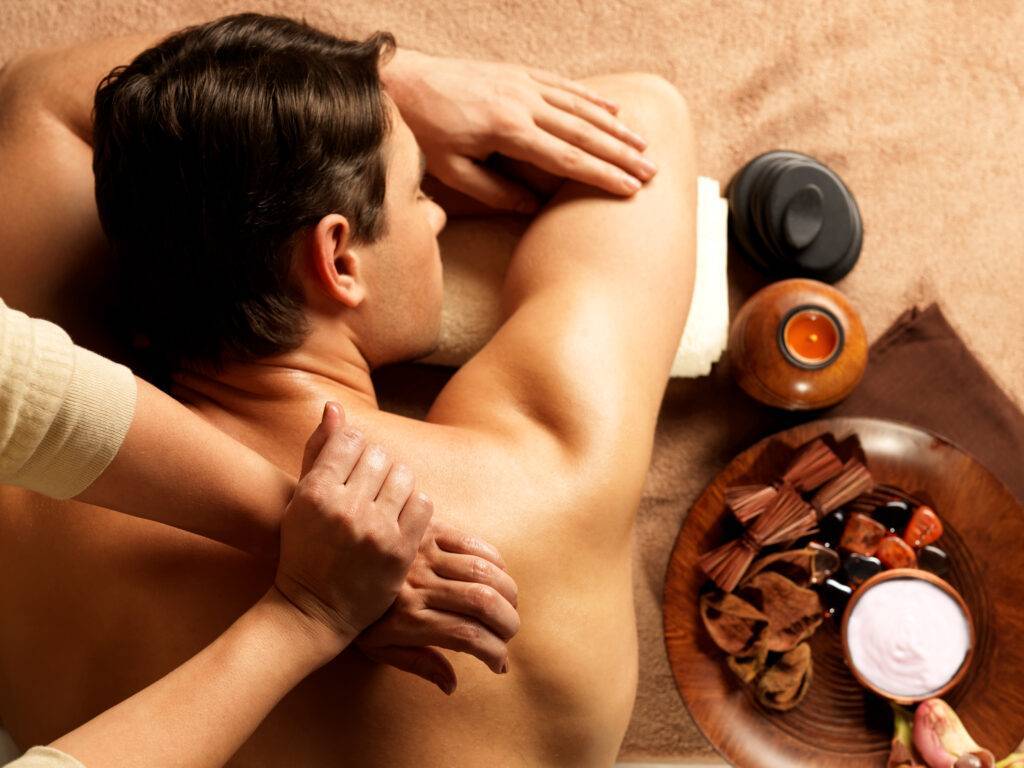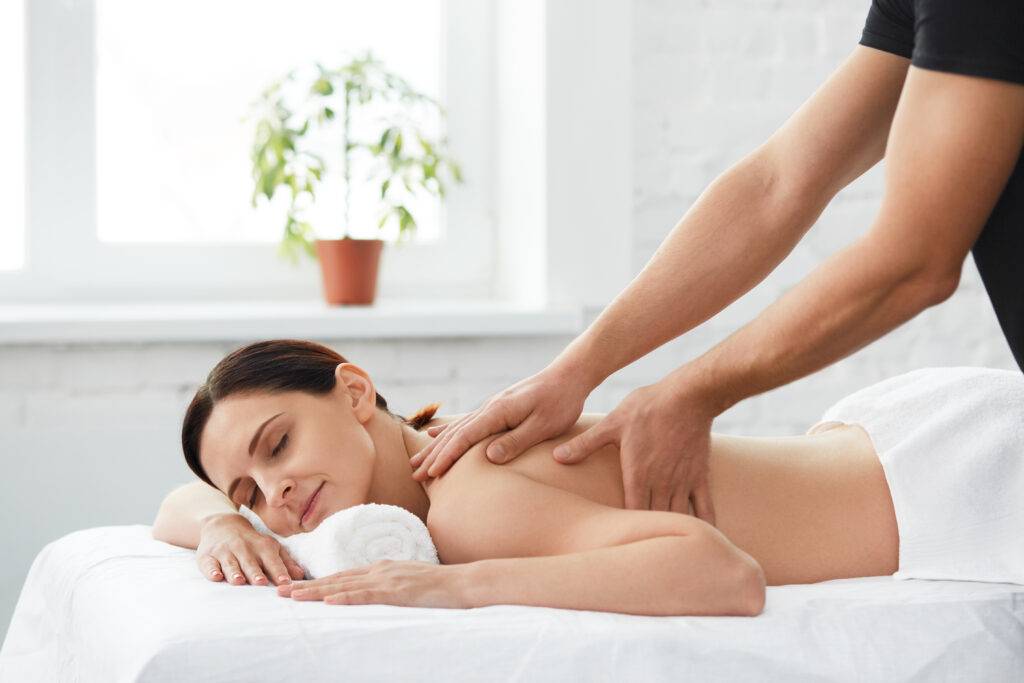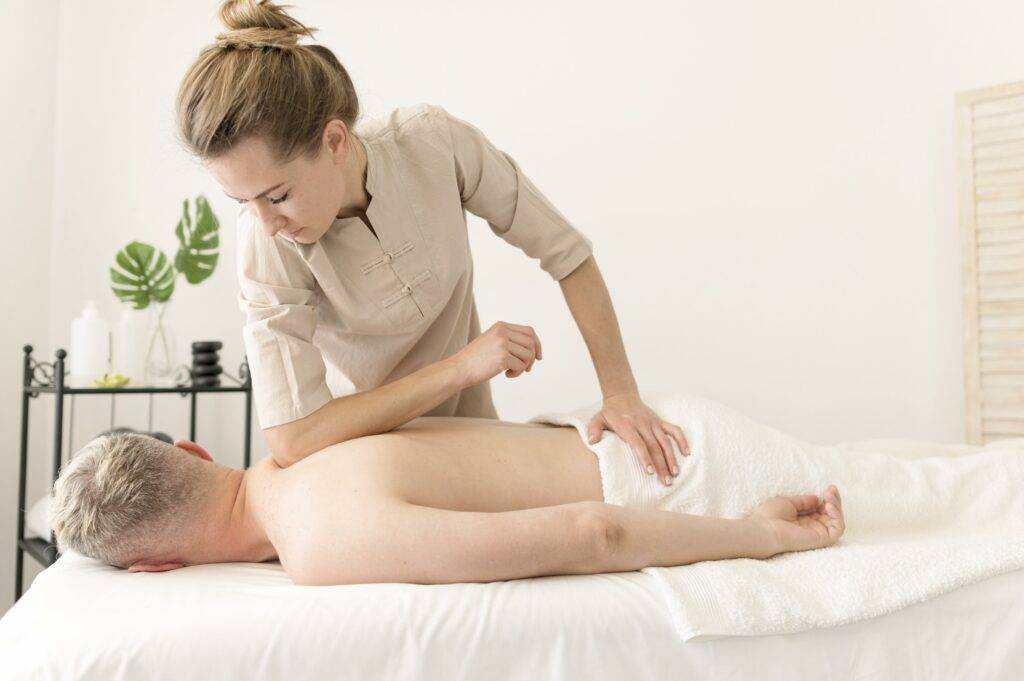Overview
Deep tissue massage is a type of massage that emphases on releasing tension and tightness in the muscles and connective tissues. It can relieve pain, improve flexibility, and promote relaxation.

This blog will teach you the basics of deep tissue massage so that you can perform it at home.
Section 1: Understanding Deep Tissue Massage
- What is Deep Tissue Massage?
Deep tissue massage is a type of massage that uses firm pressure to reach the deeper layers of muscle and connective tissue. It is often used to treat chronic pain and muscle tension.
- Benefits of Deep Tissue Massage
Deep tissue massage has several benefits, including:
- Relieving pain
- Improving flexibility
- Promoting relaxation
- Reducing muscle tension
- Improving circulation
- Increasing range of motion
- Reducing stress and anxiety

Section 2: Preparing for Your DIY Deep Tissue Massage
2.1 Creating the Right Environment
Before you start your massage, it is important to create a relaxing environment. Dim the lights, play calming music, and use essential oils or candles to create a pleasant scent.
2.2 Selecting the Right Tools and Oils
You will need a massage oil or lotion to reduce friction and help your hands glide smoothly over the skin. Choose an oil that is non-comedogenic and hypoallergenic.
Use massage tools, such as massage balls, foam rollers, or massage sticks, to enhance the effects of your massage.
Section 3: Basic Deep Tissue Massage Techniques
3.1 Warm-Up Strokes
Start your massage with warm-up strokes to prepare the muscles for deeper pressure. Use long, sweeping motions with the palms of your hands, gradually applying more pressure as the muscles begin to relax.
3.2 Effleurage and Petrissage
Effleurage is a technique that involves long, smooth strokes with the palms of your hands or fingertips. It is used to spread oil, warm the muscles, and promote relaxation.
Petrissage is a technique that involves kneading and lifting the muscles. It is used to release tension and improve circulation.
3.3 Stripping and Friction
Stripping is a technique that involves applying deep pressure to the muscles with your thumbs, knuckles, or elbow. It is used to release trigger points and knots.
Friction is a technique that involves using circular motions to apply pressure to the muscles. It is used to break down adhesions and scar tissue.

3.4 Trigger Point Therapy
Trigger points are small, tender muscle areas that can cause pain and referred pain in other parts of the body.
Trigger point therapy is a technique that involves applying sustained pressure to trigger points to release tension and pain.
3.5 Cross-Fiber Friction
Cross-fiber friction is a technique that involves applying pressure to the muscles against the grain. It is used to break down adhesions and scar tissue.
Section 4: Targeting Specific Muscle Groups
4.1 Neck and Shoulders
The neck and shoulders are common areas of tension and pain.
Use your fingertips or thumbs to apply circular pressure and kneading to massage the neck and shoulders. Focus on any areas of tightness or soreness.
4.2 Lower Back and Hips
The lower back and hips are another common area of pain.
Use your knuckles or thumbs to massage the lower back and hips to apply stripping and friction techniques. Focus on the muscles along the spine and the sides of the lower back.
4.3 Legs and Calves
The legs and calves can also become tight and sore.
To massage the legs and calves, use both hands to knead and apply pressure to the muscles. Focus on any areas of tightness or soreness. You may also want to use a foam roller for added relief.

Section 5: Self-Care After Your DIY Massage
5.1 Hydration and Rest
Drinking plenty of water after a massage is important to help flush out toxins and promote healing. It would help to give your body time to rest and recover.
5.2 Regular Self-Massage
For best results, massage yourself regularly. Even a short massage can help to relieve tension and improve your overall well-being.
Conclusion
Deep tissue massage is a great way to relieve pain, improve flexibility, and promote relaxation. You can learn to perform deep tissue massage on yourself at home with a little practice.

